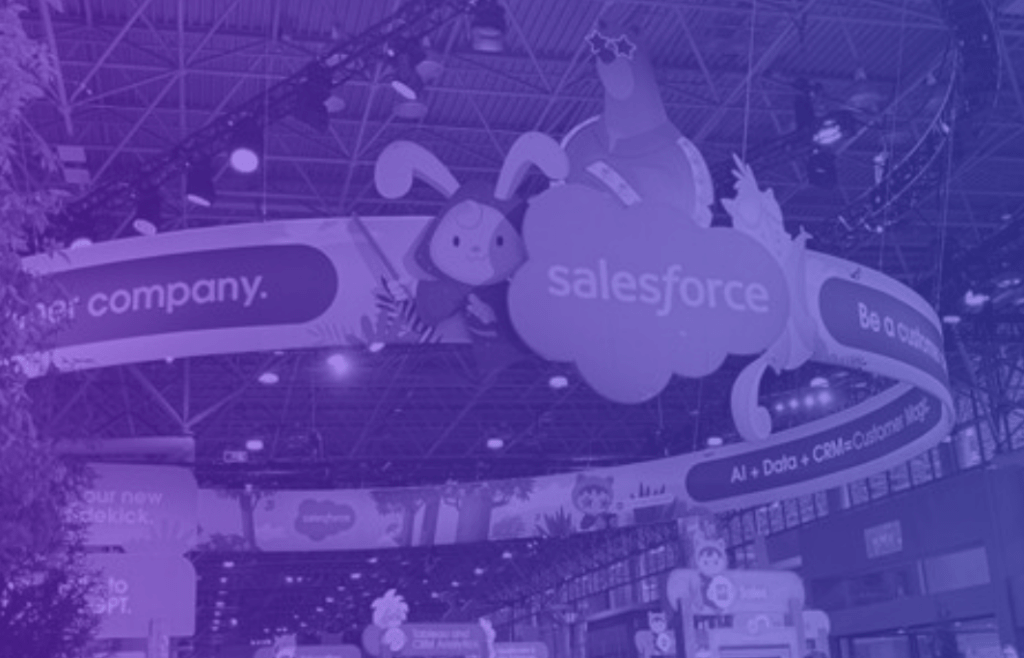The Salesforce World Tour is a highly-anticipated global event series that showcases the latest innovations in cloud computing and customer relationship management (CRM) technology. Our team of industry experts attended both of the recent Salesforce World Tour events in New York and Washington, DC, and they shared some interesting observations. Here are three key takeaways that businesses should know to better prepare for the second half of the year.
1. AI is a Force to Reckon With, and It’s Here to Stay
One of the most significant trends in the technology industry is the rise of artificial intelligence (AI). Just look at the numbers: ChatGPT took only two months after its official launch to reach 100 million active users, the fastest ramp in the history of a consumer internet app. TikTok, by comparison, took 9 months to achieve the same milestone. This is a strong testament to both the public excitement over this technology and its perception of AI’s power.
The B2B world is surely quick to pick up on this trend. From automating routine tasks to providing insights that can inform strategic decision-making, new software powered by AI is being released every day to streamline operations and increase efficiency. Salesforce has been at the forefront of this trend with its Mulesoft and Einstein software.
Mulesoft is an integration platform that allows businesses to connect their applications and data sources, regardless of where they are hosted. This can help organizations improve their operational efficiency by reducing the time and effort required to manage their technology infrastructure. Meanwhile, Einstein is an AI-powered platform that provides predictive analytics and insights into customer behavior. By leveraging these insights, businesses can improve their marketing, sales, and customer service efforts.
The question for organizations to answer is how to properly upskill and reskill their workers so they can leverage these nascent technologies it to truly innovate their operations.
2. Companies Need to Better Leverage Technology to Navigate Economic Challenges
We’re in a period of economic uncertainty. The recent workforce shake-ups in the tech world have forced companies to focus on efficiency, agility, and vigilance. Organizations that can successfully navigate these uncertainties through cost-cutting, efficiency-boosting, and thorough digitalization have the opportunity to gain a significant competitive advantage and come out of this period as winners.
Technologies will play an increasingly important role in both the strategic planning and execution of any growth plan this year. For example, one of the ways that many organizations have adopted to cut costs is by moving to the cloud. By adopting cloud-based solutions, organizations can reduce their reliance on expensive on-premises infrastructure and benefit from the scalability and flexibility of cloud computing. Cloud-based solutions can be quickly and easily scaled up or down depending on business needs, allowing businesses to respond to market changes in a timely and effective manner. This can help businesses stay competitive and agile in a rapidly changing economic landscape.
3. There is a Constant Need for Technologists Trained to Companies’ Specific Tech Stack.
As businesses seek to leverage technology to navigate economic challenges and prepare for growth, there is a growing need for technologists trained in the latest technologies. This includes not only AI and cloud computing but also blockchain, cybersecurity, and the Internet of Things (IoT).
Under economic pressure and rapid technology advances, companies need fast and tangible ROI for any technologies they bring on board and maximum utilization of existing tech stacks. Building a composable roadmap grounded on values and outcomes is the first step. The more important one is to have workers who understand the technologies and can marry them to the specific context of your operations to move the needle.
Businesses need technologists with a combination of technical skills, business acumen, and open communication to help them reduce risk, speed up onboarding, and start making an impact faster. Technologists need to be able to work closely with business leaders to understand their needs and translate them into technical solutions that drive business values.
Cultivating a new generation of technologists specifically trained in your ecosystem requires investments in ongoing training and workforce development programs. This can include partnering with talent incubators such as Smoothstack, sponsoring online courses and certifications, and encouraging collaboration and knowledge sharing among team members.
Conclusion: It’s Time for Hiring Managers and HR Professionals to Rethink Their Priorities
The Salesforce World Tour events in New York and Washington, DC, provided valuable insights into the future of technology and its impact on businesses. As businesses seek to embrace the latest technologies and prepare for the future of work, it’s time for hiring managers and HR professionals to rethink their priorities and hiring approaches to better support these evolving trends and key success factors.
